International Steel Prices

Foreign vs. Domestic Hot Rolled Prices
Written by Brett Linton
February 9, 2020
When SMU last reported on foreign hot rolled prices on Jan. 23, we questioned whether the U.S. price attraction may be slipping, as the price spread had shrunk for all three foreign indices we compare. This week we see that has not been the case as German and Italian HRC prices have risen through February, resulting in a wider price spread when equalized and compared against the SMU hot rolled index average.
The following calculation is used by Steel Market Update to identify the theoretical spread between foreign hot rolled steel prices (delivered to U.S. ports) and domestic hot rolled coil prices (FOB domestic mills). We want our readers to be aware that this is only a “theoretical” calculation as freight costs, trader margin and other costs can fluctuate, ultimately influencing the true market spread.
We are comparing the SMU U.S. hot rolled weekly index to CRU hot rolled weekly indices for Germany, Italy and the Far East (East and Southeast Asian port).
![]() SMU includes a 25 percent import tariff effective on foreign prices after March 23, 2018. We then add $90 per ton to the foreign prices in consideration of freight costs, handling, trader margin, etc., to provide an approximate “CIF U.S. ports price” that can be compared against the SMU U.S. hot rolled price. Note that we do not include any antidumping (AD) or countervailing duties (CVD) in this analysis.
SMU includes a 25 percent import tariff effective on foreign prices after March 23, 2018. We then add $90 per ton to the foreign prices in consideration of freight costs, handling, trader margin, etc., to provide an approximate “CIF U.S. ports price” that can be compared against the SMU U.S. hot rolled price. Note that we do not include any antidumping (AD) or countervailing duties (CVD) in this analysis.
German HRC
As of Wednesday, Feb. 5, the CRU German HRC price was $479 per net ton, up $6 over the previous week and up $8 from two weeks prior. Adding tariffs and import costs, that puts the German price at $689 per ton delivered to the U.S. The latest SMU hot rolled price average is $585 per ton, down $5 over both last week and two weeks prior. Therefore, domestically sourced HRC is theoretically $104 per ton cheaper than imported German HRC; the spread was $91 last week and $89 two weeks ago. U.S. prices have held this price advantage for 64 consecutive weeks.
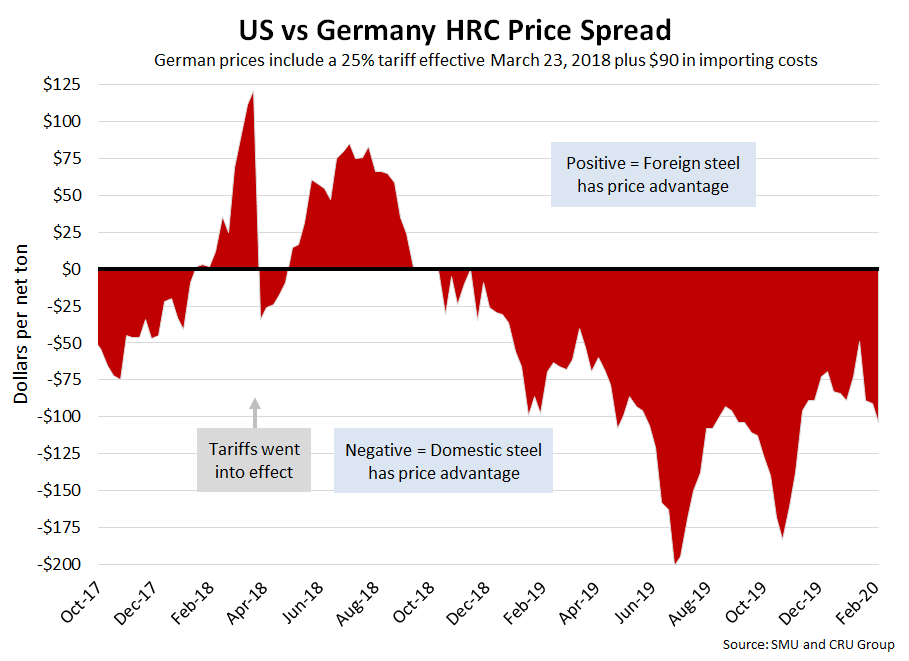
Italian HRC
CRU published Italian HRC prices at $451 per net ton, up $11 from last week and up $12 over two weeks ago. After adding tariffs and import costs, the delivered price of Italian HRC is approximately $654 per ton. Therefore, domestic HRC is theoretically $69 per ton cheaper than imported Italian HRC; the spread was $50 the previous week and $49 two weeks prior. U.S. prices have held the price advantage for 44 consecutive weeks.
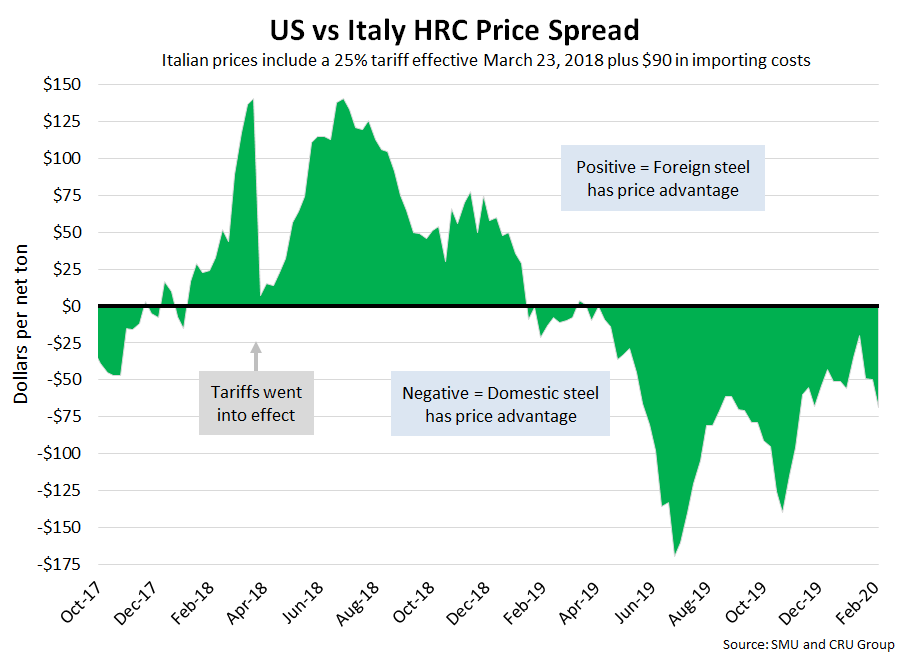
Far East Asian HRC
The CRU Far East Asian HRC price fell $12 over last week at $455 per net ton, also down $12 from two weeks prior. Adding tariffs and import costs, the delivered price of Far East Asian HRC to the U.S. is $659 per ton. Therefore, U.S.-produced HRC is theoretically $74 per ton cheaper than imported Far East Asian HRC; the spread was $84 last week and two weeks ago. Domestic prices have held this price advantage for 52 consecutive weeks.
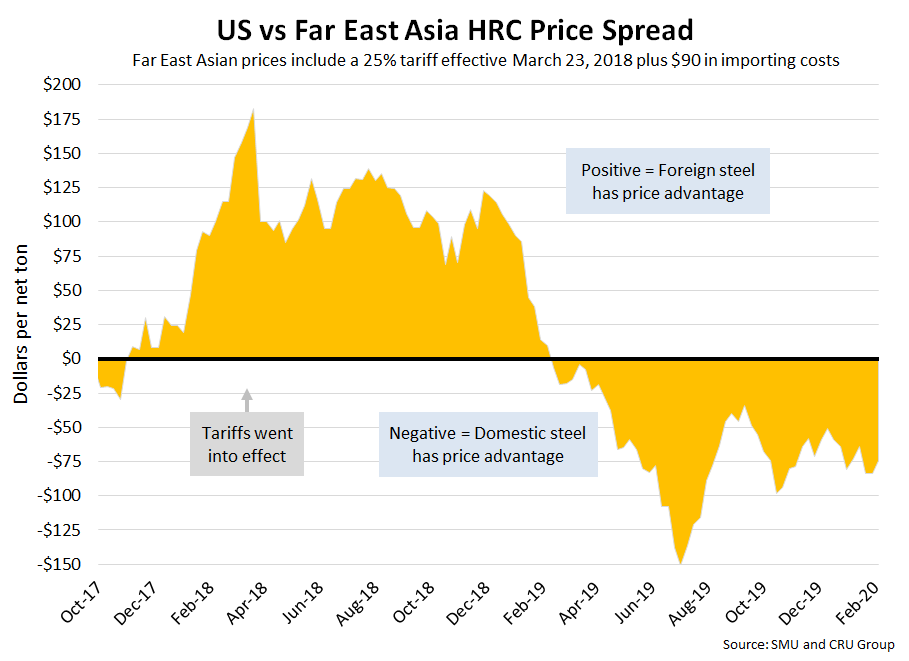
The graph below compares all four price indices and highlights the effective date of the tariffs. Foreign prices are referred to as “equalized,” meaning they have been adjusted to include tariffs and importing costs for a like-for-like comparison against the U.S. price.
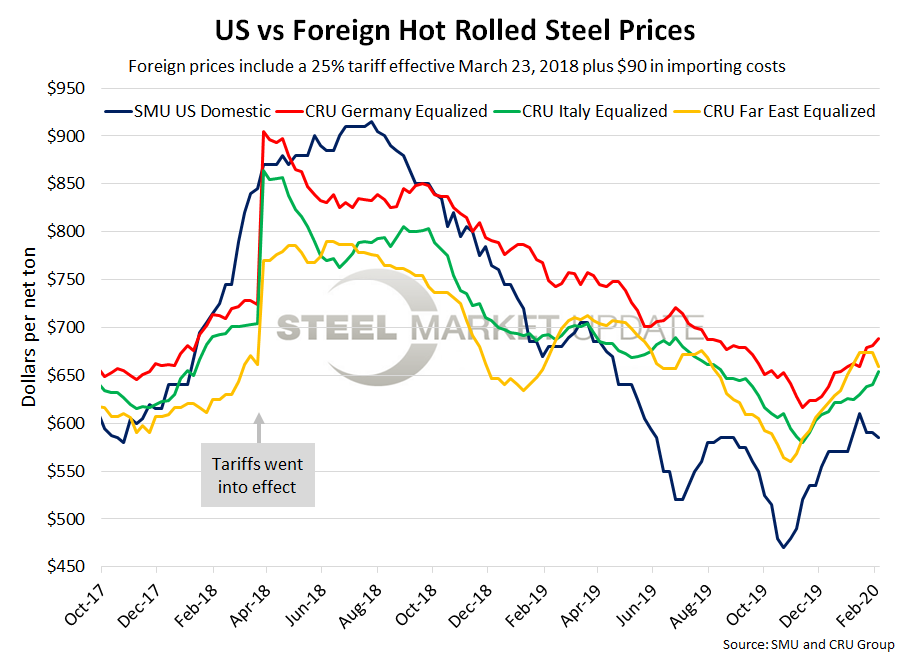
Note: Freight is an important part of the final determination on whether to import foreign steel or buy from a domestic mill supplier. Domestic prices are referenced as FOB the producing mill, while foreign prices are FOB the Port (Houston, NOLA, Savannah, Los Angeles, Camden, etc.). Inland freight, from either a domestic mill or from the port, can dramatically impact the competitiveness of both domestic and foreign steel. When considering lead times, a buyer must take into consideration the momentum of pricing both domestically and in the world markets. In most circumstances (but not all), domestic steel will deliver faster than foreign steel ordered on the same day.

Brett Linton
Read more from Brett LintonLatest in International Steel Prices
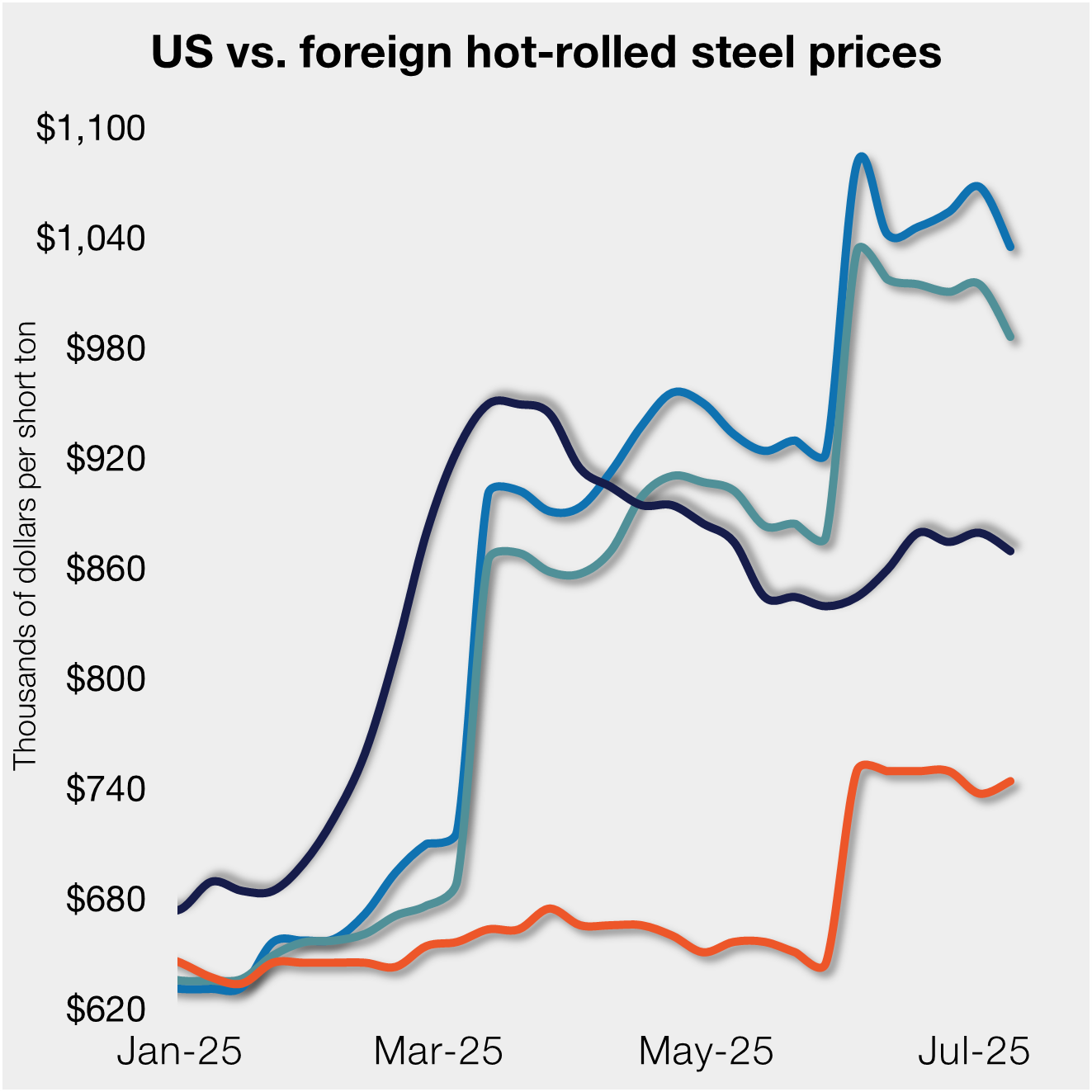
S232 tariffs keep US HR prices below imports from EU
Hot-rolled (HR) coil prices in the US ticked down this week but have fluctuated little over the past month. Stateside tags continue to trail imports from Europe, supported by Section 232 steel tariffs that were doubled in early June.

Doubled S232 tariff holds US HR prices below EU
David Schollaert presents this week's analysis of hot-rolled coil prices, foreign vs. domestic.

Higher US CR prices inch closer to EU, Japanese tags
US cold-rolled (CR) coil prices continued to tick higher this week, while offshore markets were mixed.

Stacked S232 keeps US HR prices below EU
US hot-rolled coil prices crept up again this week but still trail imports from Europe.

Doubled S232 lifts EU, Japanese CR prices over US tags
US cold-rolled (CR) coil prices edged up again this week, and most offshore markets moved in the opposite direction. But the diverging price moves stateside vs. abroad did little to impact pricing trends. The bigger impact was from Section 232, which were doubled to 50% as of June 3. The higher tariffs have resulted in […]
